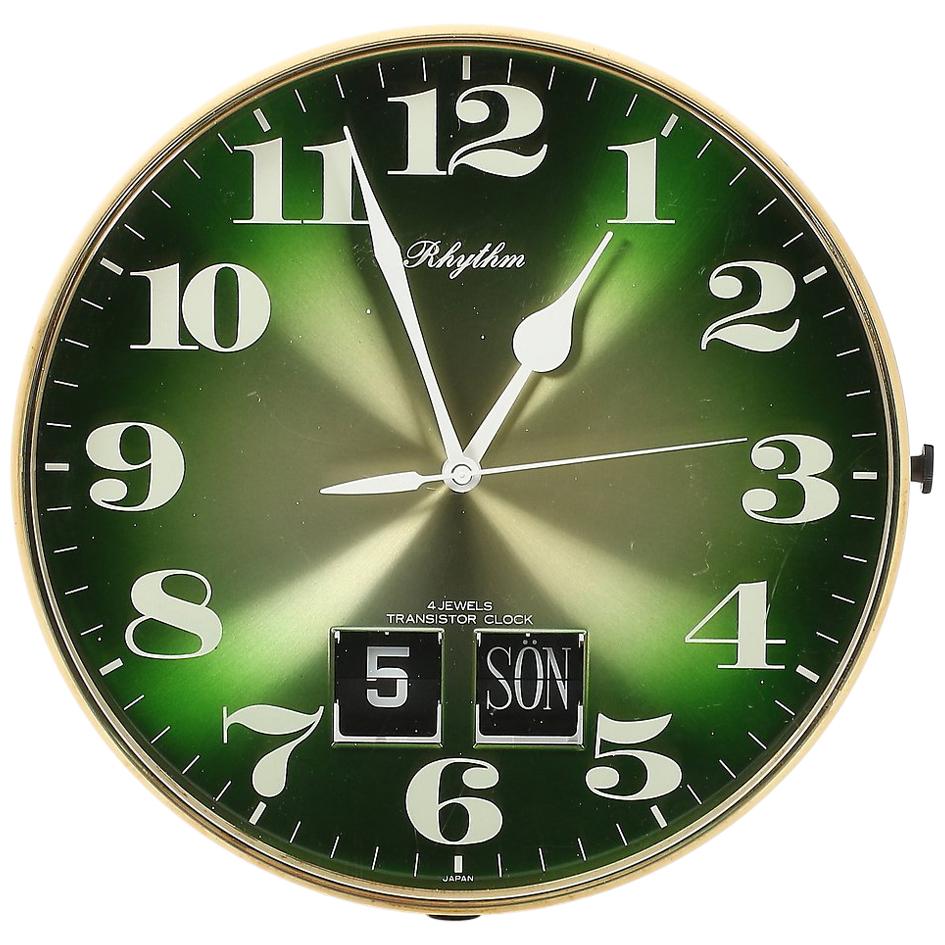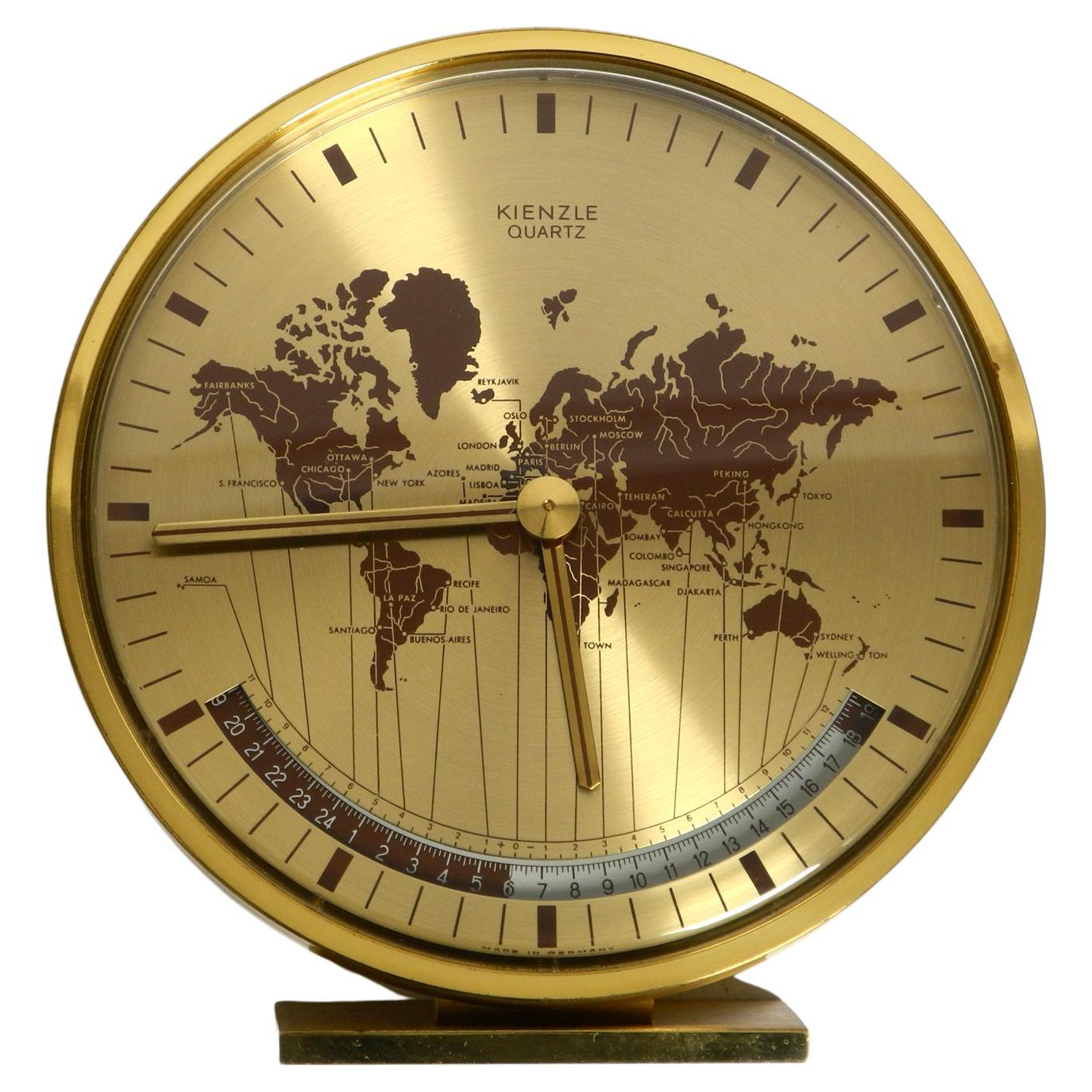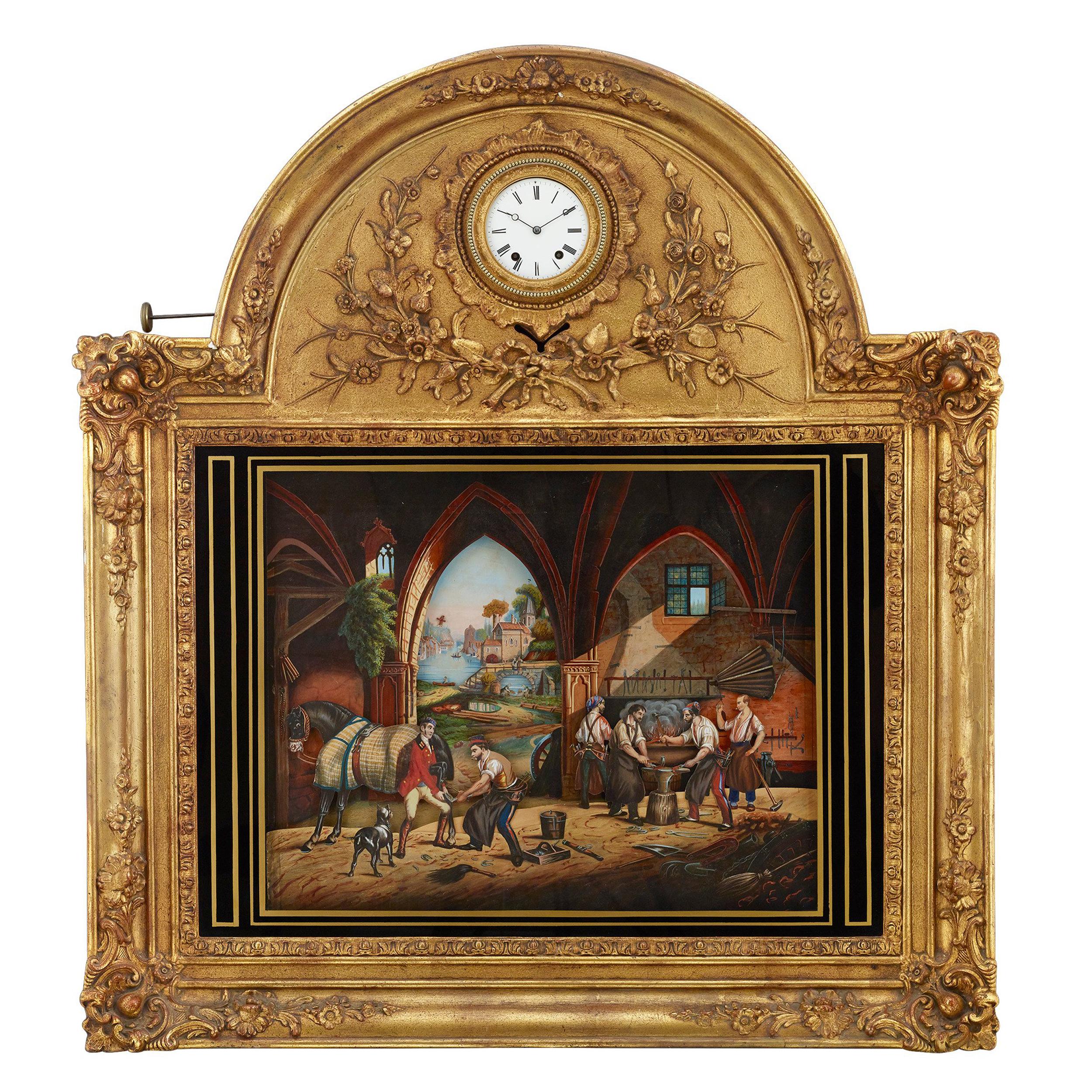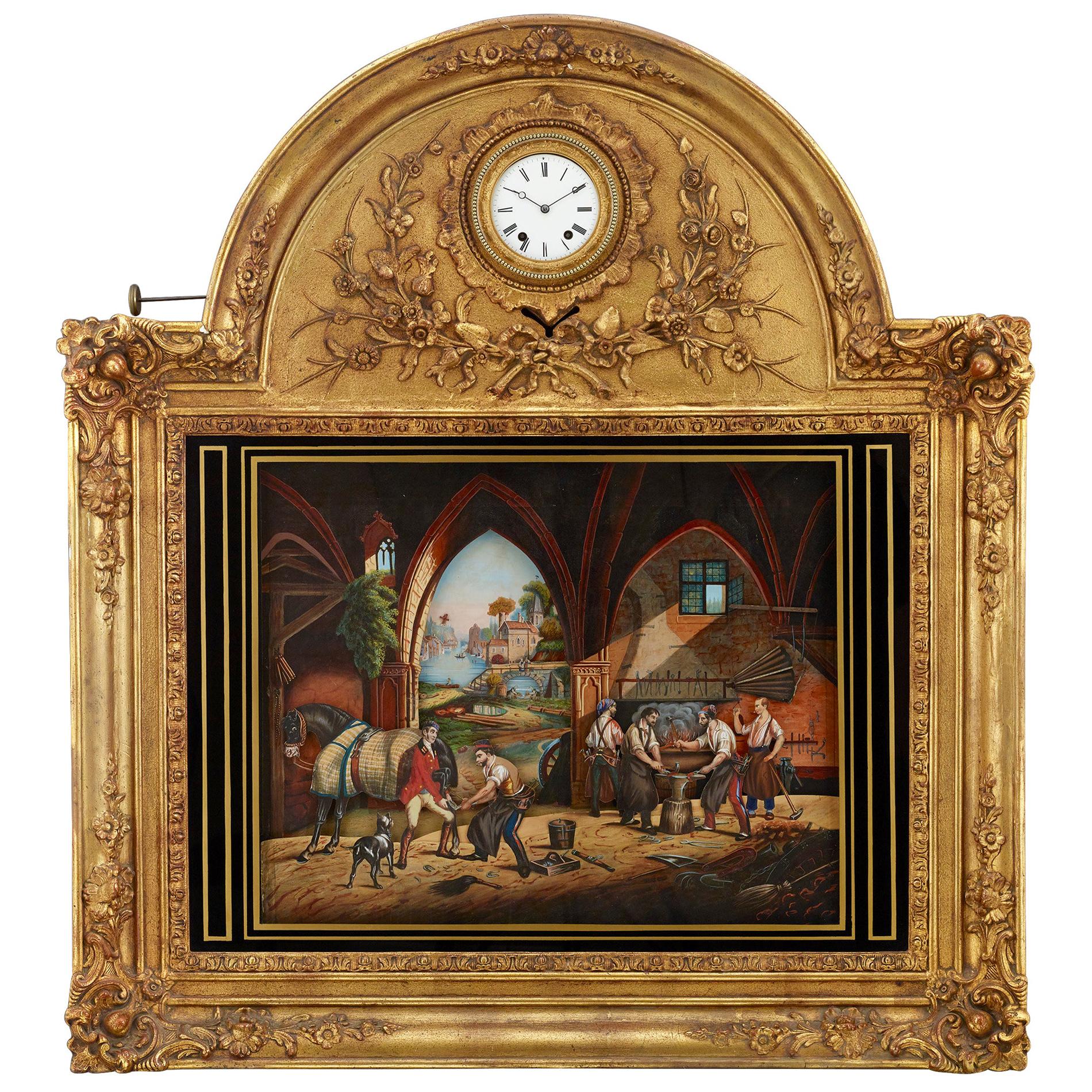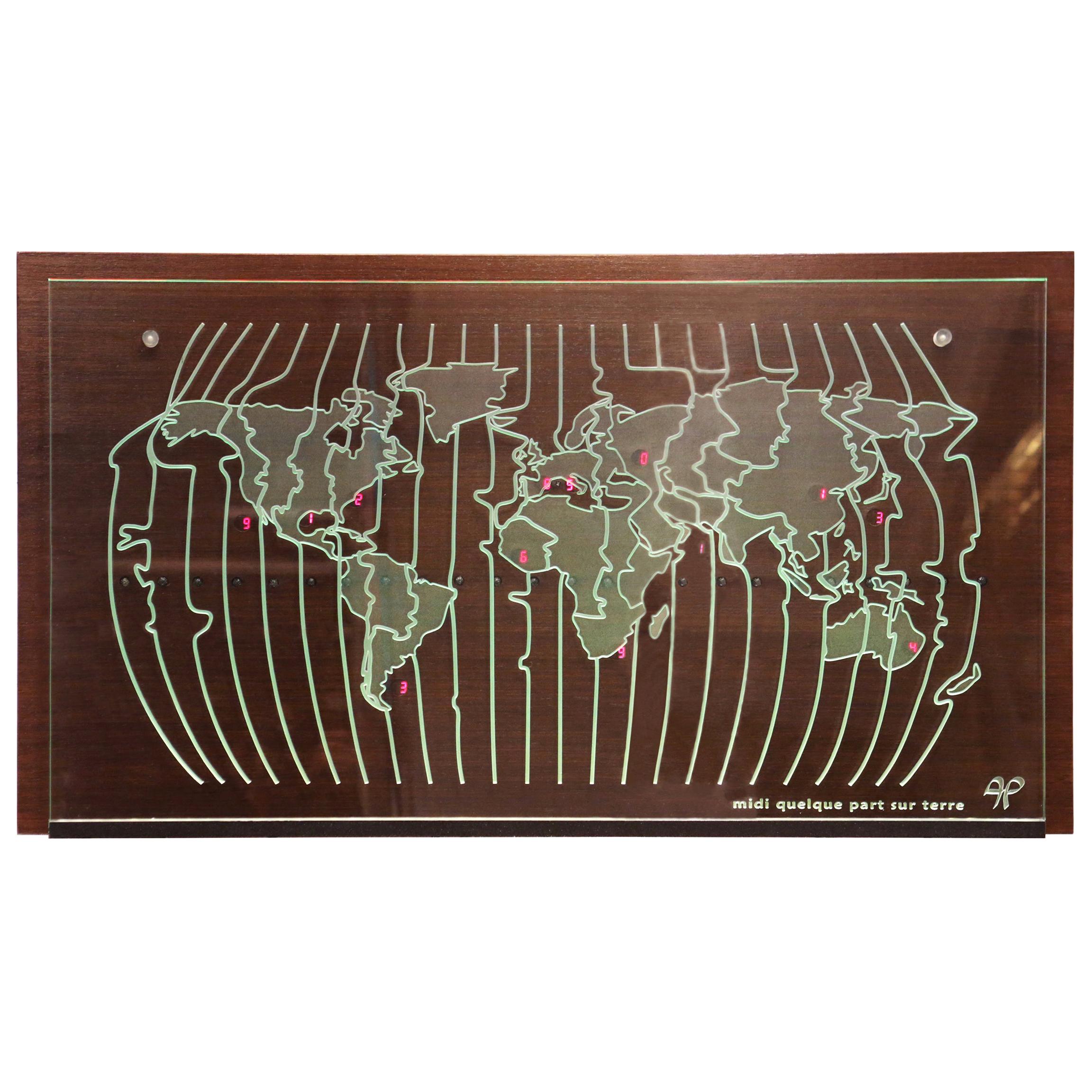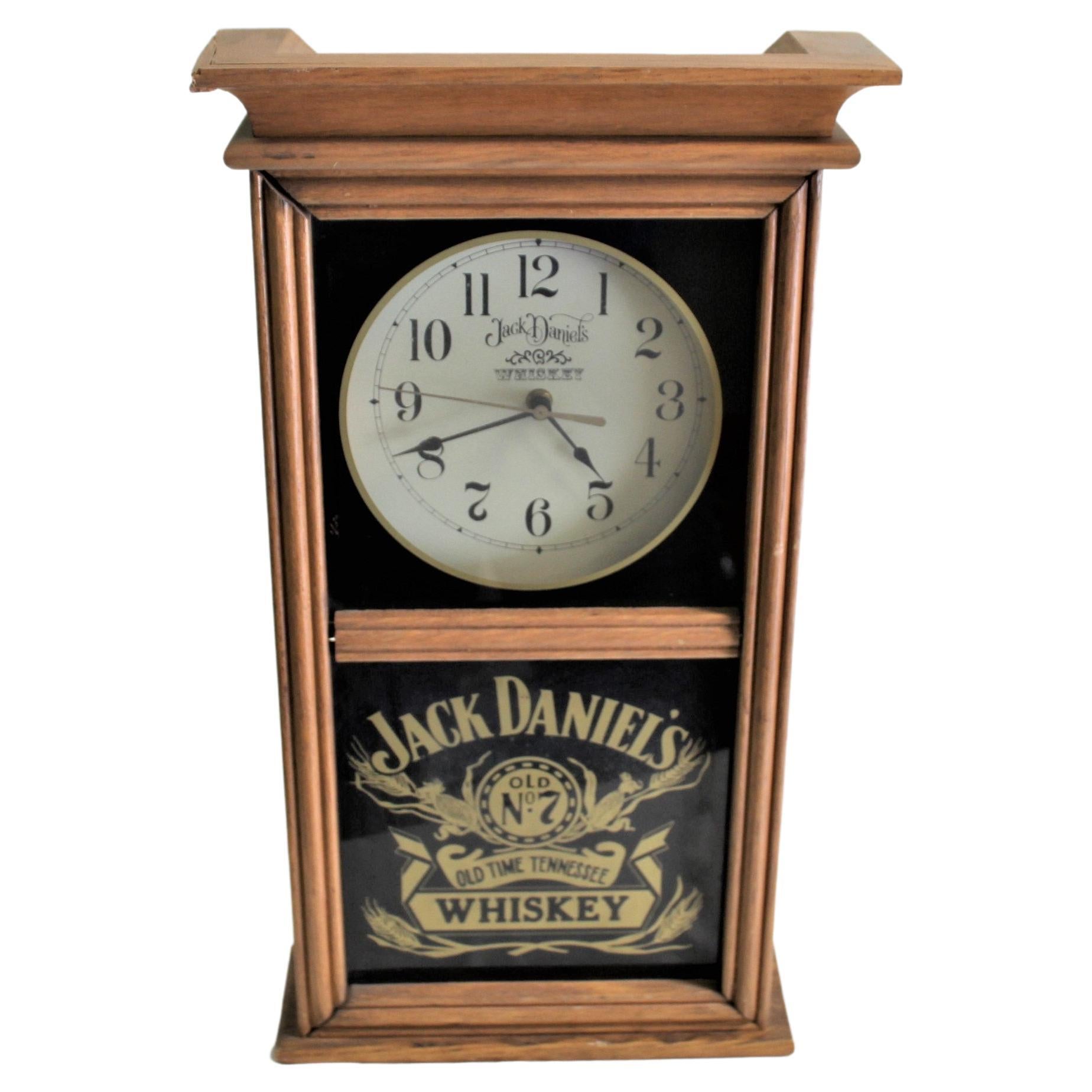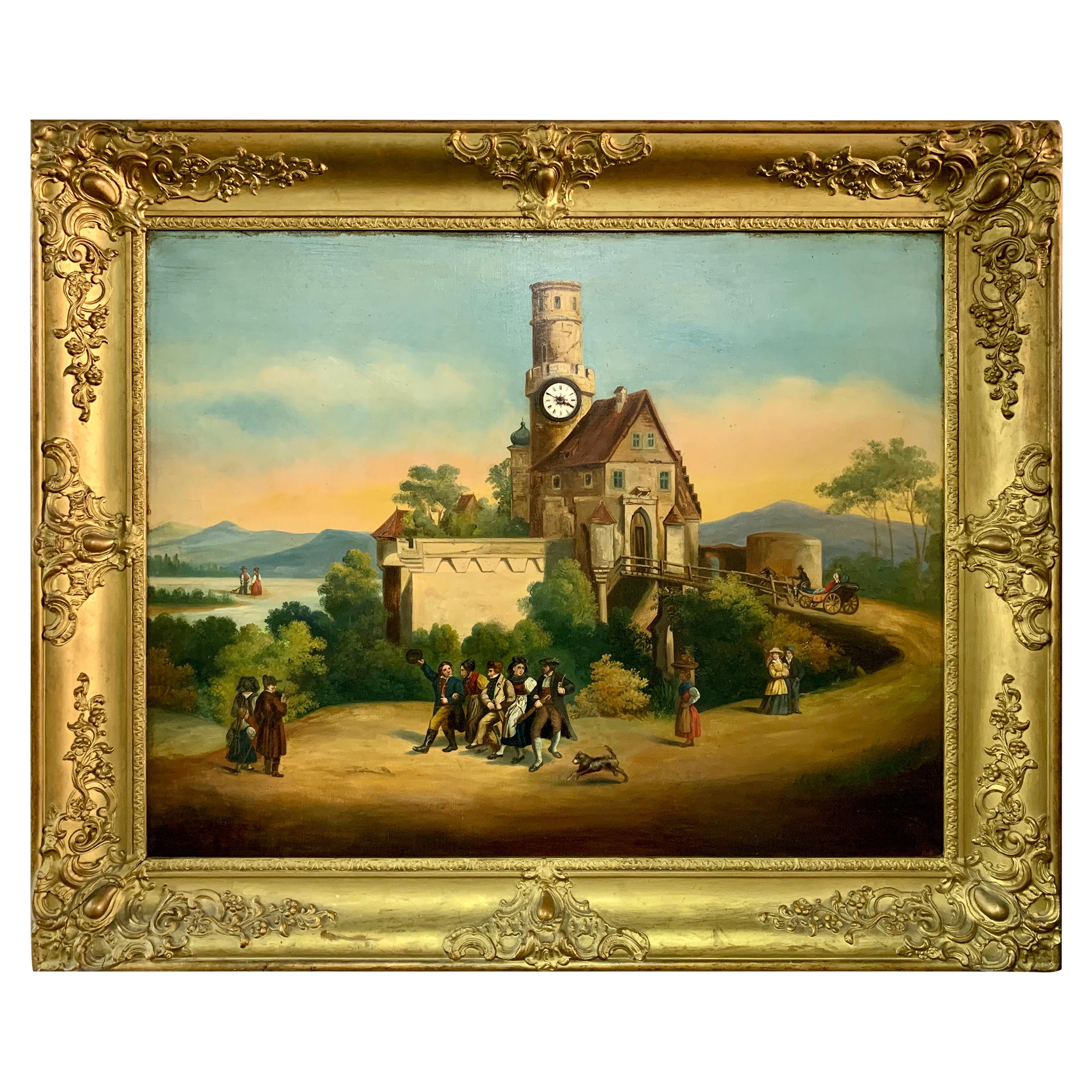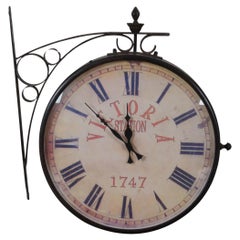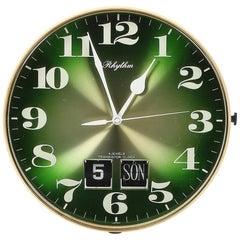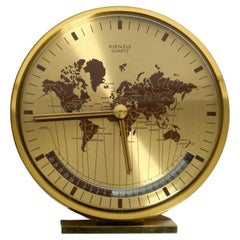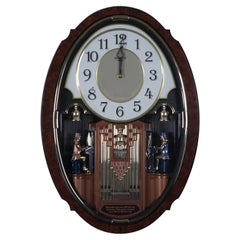
Vintage Small World Rhythm Piano Organist Musical Battery Wall Clock Japan
View Similar Items
Want more images or videos?
Request additional images or videos from the seller
1 of 13
Vintage Small World Rhythm Piano Organist Musical Battery Wall Clock Japan
About the Item
- Dimensions:Height: 21 in (53.34 cm)Width: 14.75 in (37.47 cm)Depth: 4 in (10.16 cm)
- Style:Modern (In the Style Of)
- Materials and Techniques:
- Place of Origin:
- Period:
- Date of Manufacture:20th Century
- Condition:Wear consistent with age and use. Minor losses. Fair condition, not tested, needs repair, one battery coil corroded/broken.
- Seller Location:Dayton, OH
- Reference Number:Seller: 288751stDibs: LU5343233601252
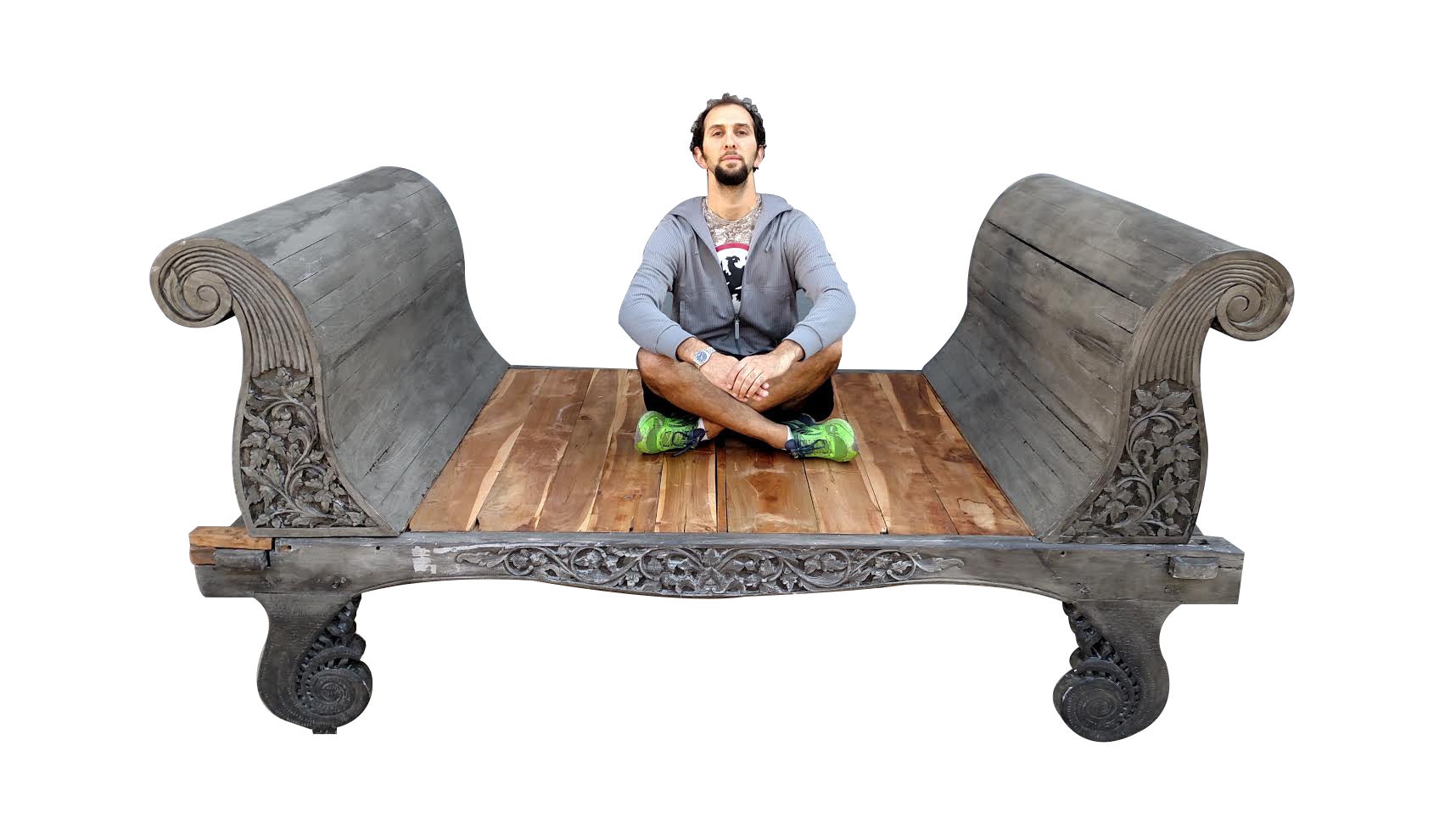
About the Seller
4.9
Platinum Seller
These expertly vetted sellers are 1stDibs' most experienced sellers and are rated highest by our customers.
Established in 2010
1stDibs seller since 2020
1,115 sales on 1stDibs
More From This SellerView All
- Vintage German Brass Ships Porthole Nautical Boat Wall Clock Mechanical MovementLocated in Dayton, OHMid 20th century key wound port hole clock. Features a brass frame with metal dial and glass window. Hangs via 3 screw holes at the base. Marked along the face EW A porthole, som...Category
Mid-20th Century Mid-Century Modern Wall Clocks
MaterialsBrass
- Vintage Victoria Station 1747 Double Sided Brass Wall Mount Railway Clock 18"Located in Dayton, OH2 Available - Late 20th century double sided railway clock styled after the famous clock at Victoria Station, London. Wrought metal wall mounted support and case in a dark bronze fin...Category
Late 20th Century Victorian Wall Clocks
MaterialsBrass
- Vintage Victoria Station 1747 Double Sided Brass Wall Mount Railway Clock 14"Located in Dayton, OHLate 20th century double sided railway clock styled after the famous clock at Victoria Station, London. Wrought metal wall mounted support and case in a dark bronze finish. 10 inch d...Category
Late 20th Century Victorian Wall Clocks
MaterialsMetal
- Vintage Victoria Station 1747 Double Sided Brass Wall Mount Railway Clock 18"Located in Dayton, OHLate 20th century double sided railway clock styled after the famous clock at Victoria Station, London. Wrought metal wall mounted support and case in a dark bronze finish. 12 inch d...Category
Late 20th Century Victorian Wall Clocks
MaterialsMetal
- Rare Self Winding Clock Co Naval Observatory Time Western Union Wall Clock 26"By Self Winding Clock Co.Located in Dayton, OHAntique Western Union, Naval Observatory Time, self winding clock. Features a tall wooden case with carved corners and pediment mounted with tin sign reading "Naval Observatory Time Hourly By Western Union. White metal face with black Roman numerals and hands. Interior of case labeled "Property of Self-Winging Clock Co New York" and serial number on metal tag as well as on works. F Style / Vibrator movement, Serial Number 92630 (likely manufactured before 1917). Patented Oct. 4, 1898 by the Self Winding Clock Company. Fitted with Archer AC Adapter. "The Self Winding Clock Company (SWCC) of New York began business in 1886 marketing their own electro-mechanical clocks based on the 1884 electro-mechanical clock patent of one of the company founders, Chester Pond (1844-1912). The innovative principle of this clock mechanism was the incorporation of a small electric winding motor that automatically rewound the mainspring after the clock ran for one hour. The clocks were powered by batteries. The batteries would last at least one year. By being automatically rewound each hour, the strain on the mechanism was kept to a minimum, resulting in a very accurate timepiece. At about the same time SWCC began selling clocks, Pond was developing an electro-mechanical synchronizer attached to the clock movement that could synchronize the clock hands to an accurate time source. The synchronization occurs when a remote, precisely timed, electrical impulse is sent via wires connected to the individual clocks. By 1887 the synchronizers had been so improved that the Self Winding Clock Company could not only market individual clocks but also sell entire synchronized clock systems. By the 1960’s the days of individual elegant mechanical timepieces and synchronized time systems were over. SWCC ceased operations in the late 1960’s. All company records and inventories were relegated to the trash pile. The STYLE “F”, or as commonly referred to, the VIBRATOR movement was developed by Frederick M. Schmidt in the late 1890’s. By 1898 the “F” movement was being installed in almost all SWCC clocks. The movement has a Graham dead beat escapement. The “F” movement incorporates both the time train and winding motor in one set of plates. The motor used a single pair of coils. It was more reliable and easier to service than the rotary movement. The mainspring is re-wound after running for one hour. The vibrating armature oscillates up and down carrying a winding lever with a pawl that turns the winding wheel. The “F” movement was used in individual clocks and in clocks that were part of synchronized systems. It was made in 60, 80,120 and 140 beat versions. There were virtually no changes to the movement in 60 plus years the movement was in production. Almost all Style “F” movements wound on 3 volts DC. Style “F” movement serial numbers started in the 33,000’s and the first movements were probably made in 1898. The earliest plates had patent dates of 1891, 1892 & 1898. Serial numbers with these patent dates go up to the 63,000’s and were made before 1908. By 1908 the plates only had the 1898 patent date. By using catalog images of movement serial numbers it can be concluded that movements with serial numbers up to 112,000 were made in or before 1917. Movements with serial numbers up to 196,000’s were made in or before 1929. The single patent date serial numbers go as high as 220,000’s. Then there appears to be a large numbering gap. Finally, movements appear with no patent dates and serial numbers with the prefix FR. These numbers start at 300,000 but only continue to about 302,000. Start again at 400,000 and continue to about 402,000. Based on the large serial number gaps, the total number of “F” movements manufactured is probably around 200,000. They were manufactured between 1898 and possibly as late as the 1950’s. SWCC both sold clocks to and partnered with their biggest customer, Western Union in a nationwide distribution of precisely accurate “Naval Observatory Time” clocks. These either 120 or 140 beat Naval Observatory clocks...Category
Early 20th Century Late Victorian Wall Clocks
MaterialsMetal
- Antique German Walnut Inlaid Mother of Pearl Short Drop Peekaboo Wall Clock 23"Located in Dayton, OHAntique short drop wall clock featuring a round beveled frame accented with inlaid mother of pearl cut-out leaf designs. The drop features an oval peekaboo window framed in black met...Category
Early 20th Century Wall Clocks
MaterialsMother-of-Pearl, Glass, Walnut
You May Also Like
- Elegant Japanese Rhythm Electric Wall ClockLocated in Vienna, ATBody made of plastic with plexiglas clock face made in Japan in the early 1970s. Fitted with a quartz movement with a battery. Delivery time 2-3 weeks.Category
Vintage 1970s Japanese Industrial Wall Clocks
MaterialsPlexiglass, Plastic
- Space Age Rhythm Emerald Green Alarm Clock 1960s Japan VintageLocated in Antwerpen, BEThis unique and stylish vintage Rhythm Alarm Clock immediately falls within the Space Age style due to its shape. It was made in Japan in th...Category
Vintage 1960s Japanese Space Age Table Clocks and Desk Clocks
MaterialsChrome
- Rare 1980s battery-operated world time table clock by KienzleBy Kienzle ClocksLocated in München, DERare 1980s brass world time table clock by Kienzle. Goes back to the design of Heinrich Johannes Möller. Made in Germany. Kienzle is the oldest clock company in Germany. Housing is m...Category
Vintage 1980s German Regency Table Clocks and Desk Clocks
MaterialsMetal, Brass
- Tole Clock With Battery MovementLocated in Charlottesville, VAA decorative tole clock. It is non working. Made in the 19th CenturyCategory
Antique 19th Century French Wall Clocks
MaterialsMetal
- French Musical Automaton Picture ClockLocated in New Orleans, LAOne of the most amazing timepieces we have ever acquired that offers far more than meets the eye, this incredible work of art blends the beauty of a painting with the mechanical complexities of both a cylinder music box and an automaton. While it is clear to see the integrated clock residing within the arched giltwood and gesso frame, when activated, this painting quite literally comes alive. As the cylinder mechanism within plays its lovely tune, every character in the farrier's shop becomes animated – from the group of farrier's toiling away at the forge and anvil forming the horseshoes, to the wagging of the charming terrier's tale. This musical automaton picture clock is attributed to Xavier Tharin of Paris who was the preeminent creator of this fantastical "moving pictures", especially this particular farrier scene. His process mixed oil painting and hand-colored lithograph images that were layered starting from the back, middle and foreground to craft the complex series of movements throughout the painting. A look inside this particular work reveals the complex mechanism (with the three gongs, pendulum and cylinder components immediately visible) which must run the timepiece, the cylinder musical component plus the multitude of moving elements in the painting...a truly incredible feat considering the technical prowess to create just one of these devices. Musical picture clocks...Category
Antique 19th Century French Other Wall Clocks
MaterialsPaint
- French Musical Automation Picture ClockLocated in New Orleans, LAThis incredible work of art blends the beauty of a painting with the mechanical complexities of both a cylinder music box and an automaton. A clock is integrated within the arched giltwood and gesso frame, and, when activated, this painting quite literally comes alive. As the cylinder mechanism within plays its lovely tune, every character in the farrier's shop becomes animated – from the group of farrier's toiling away at the forge and anvil forming the horseshoes, to the wagging of the charming terrier's tale. This musical automaton picture clock is attributed to Xavier Tharin of Paris who was the preeminent creator of these fantastical "moving pictures", especially this particular scene. His process mixed oil painting and hand-colored lithograph images that were layered starting from the back and into the middle and foreground to craft the complex series of movements throughout the painting. A look inside this particular work reveals the complex mechanism (with the three gongs, pendulum and cylinder components immediately visible) which run the timepiece, the cylinder musical component, plus the multitude of moving elements in the painting -- a truly incredible feat considering the technical prowess to create just one of these devices. Musical picture clocks...Category
Antique Late 19th Century French Other Wall Clocks
MaterialsWood, Giltwood, Paint
